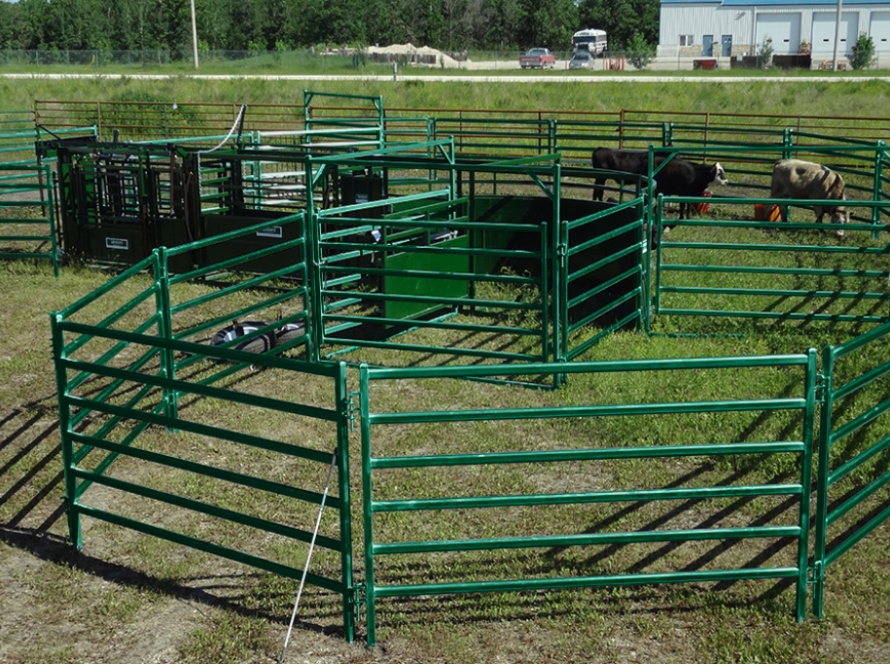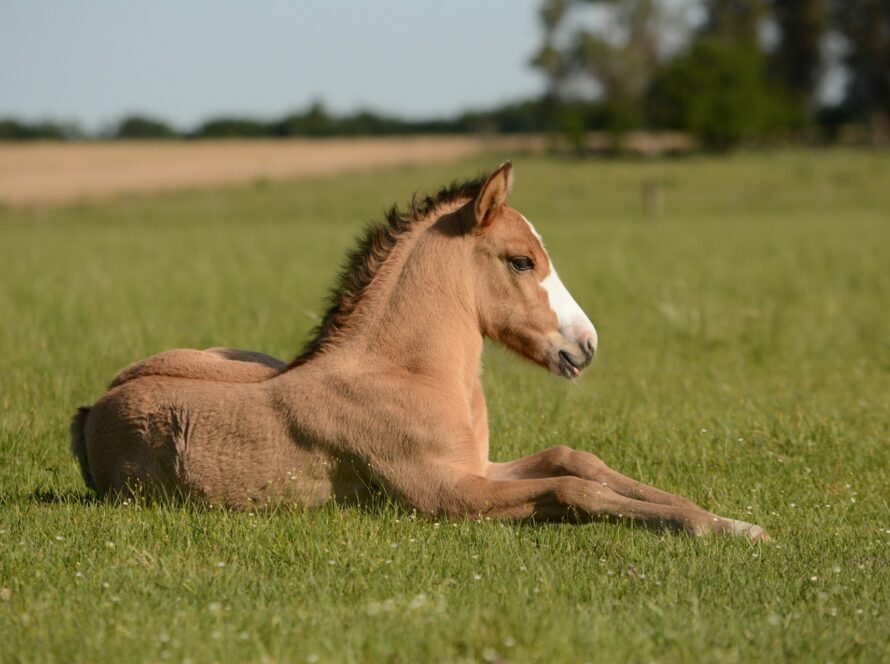Introduction
Feeding livestock efficiently is a constant concern for every farmer and rancher, whether you’re running a large operation or managing a small pasture. One of the most overlooked tools in improving feed management is the hay ring. While simple in design, a well-chosen hay ring can prevent up to 30% of hay waste, reduce cleanup, and minimize the mess that comes with group feeding.
But not all hay rings are created equal. Choosing the wrong type—or even just the wrong material—can lead to damage, injuries, or constant maintenance. That’s why it’s important to invest in quality products from suppliers who understand the needs of working farms. Florida Panels and Gates provides reliable, heavy-duty solutions designed to withstand animal pressure, reduce hay loss, and make your feeding routine more efficient.
In this blog, we’ll explore how to choose the right hay ring for your livestock and environment, compare options, and show how high-quality feeding equipment complements durable farm gates and panels for a well-rounded farm setup.
Understanding Hay Ring Purpose and Design
Hay rings are designed to contain large round bales and allow multiple animals to feed at once without trampling, sleeping on, or soiling the hay. This containment saves money, conserves labor, and keeps animals healthier by ensuring cleaner feed.
However, the wrong hay ring design can work against you. It may be too short for larger animals, too wide for smaller ones, or prone to tipping. That’s why sourcing from trusted providers like Florida Panels and Gates ensures your feeding solutions match your livestock’s specific needs.
When choosing a hay ring, consider:
- Animal size and type (horses, cattle, goats, etc.)
- Material durability
- Safety of edges and feeding holes
- Ease of movement and installation
Each of these elements helps you decide whether you need a basic round feeder or something more specialized to work with your existing corral panels and gates.
Matching the Right Hay Ring to Your Livestock
Different animals have different feeding behaviors. Choosing a hay ring that aligns with how your animals eat is crucial in minimizing waste and injuries.
1. For Cattle
Cattle are aggressive feeders. You’ll want a solid steel ring, often with vertical or slanted bars to keep them from climbing into the feeder. A three-piece ring that disassembles for easy movement is ideal. This complements the strength of your cattle gates and panels and keeps your feed area secure.
2. For Horses
Horses require a different approach. Because they tend to get their heads caught in awkward spaces, you’ll need rounded edges and larger, more open feeding spaces. Choose a ring with smooth steel and no sharp corners—similar in design to horse panels and gates that prioritize animal safety.
3. For Smaller Livestock
Goats, sheep, and ponies will do best with low-profile hay feeders or smaller ring designs. Match them with appropriately sized farm gates and panels to create enclosed, low-waste feeding zones.
Working with a company like Florida Panels and Gates ensures you have access to various designs that match different animal types and keep feeding stress-free.
Material Matters: Durability and Maintenance
One of the biggest mistakes farmers make is opting for the cheapest hay ring, only to find themselves replacing it after one season. Cheap rings rust quickly, collapse under animal pressure, or break apart at the welds.
Look for:
- Galvanized steel: Offers superior rust resistance and longevity in all climates.
- Heavy-duty welding: Prevents joints from breaking under pressure.
- Powder coating (optional): Adds an extra layer of protection, especially in high-moisture areas.
Durable hay rings are just as important as reliable livestock gates and panels. When the two work together, they form a long-term infrastructure system that improves both animal management and feed control.
Preventing Waste and Saving Time
The primary goal of any hay feeder is to reduce waste. Without a feeder, animals walk through hay, soil it, sleep on it, or trample it into the mud. With a properly fitted hay ring:
- Hay stays dry and clean
- Animals can’t pull out large amounts at once
- Feeding becomes more organized and consistent.
This not only saves money but also reduces the need for constant cleanup and repeated bale replacement.
Pairing hay rings with smart layout planning using corral gates and panels can help you separate animals by group, age, or dietary needs. Feeding efficiency is maximized when animals have designated spaces with easy access.
How to Position Hay Rings for Maximum Benefit
Choosing the right hay ring is only half the solution—the way it’s placed can impact both waste and animal health.
Tips for placement:
- High, well-drained ground: Keeps hay from becoming muddy or moldy.
- Sheltered areas: Protects from wind and rain.
- Near water sources: Reduces unnecessary walking and stress.
- Inside secure enclosures: Use corral panels and gates to limit crowding and maintain controlled access.
Planning layout using Florida Panels and Gates fencing and gate systems helps you build a permanent or mobile feeding area that adapts to your operation.
Integrating Hay Rings into Existing Farm Infrastructure
If your farm is already equipped with gates and panels for sale—whether portable or permanent—you want a hay ring that fits seamlessly into that system. Consider:
- The ring size is about the pen layout.
- Whether animals can reach all sides without overcrowding.
- Entry and exit flow are managed through farm gates and panels.
Using modular systems like those offered by Florida Panels and Gates allows you to reconfigure pens and feeding zones easily as your livestock’s needs change. For example, movable hay rings can be repositioned alongside rotating pastures or seasonal pens built with corral panels and gates.
Why Florida Panels and Gates Is the Right Choice
When you invest in a hay ring, it should work hand-in-hand with your entire livestock setup. That’s why many farmers trust Florida Panels and Gates not just for their cattle gates and panels, but also for feeding solutions like durable hay rings.
What sets them apart:
- Farm-tested durability: Built to withstand livestock pressure and weather exposure.
- Consistent sizing: Fits standard bale dimensions and panel configurations.
- Safety-focused designs: Prioritize animal welfare with smooth finishes and smart geometry.
- Excellent customer service: Knowledgeable staff help you match hay rings to your existing system.
If you’re already using horse panels and gates or other livestock enclosures from Florida Panels and Gates, you’ll appreciate how easily their hay rings integrate into your farm layout.
Conclusion
Choosing the best hay ring is an investment in efficiency, animal welfare, and feed cost management. With the right product, you’ll reduce waste, save money, and create a safer, cleaner environment for your animals.
Instead of guessing, rely on professionals like Florida Panels and Gates who understand what working farms need—whether it’s livestock gates and panels, feeding gear, or layout support. Their high-quality options ensure your feeding equipment works with, not against, your daily routines.
A good hay ring isn’t just a convenience—it’s an essential part of your livestock management strategy.
FAQs
1. Can hay rings be used with all types of livestock?
Yes, but it’s important to choose designs specific to your animals. Horse panels and gates require safer, smoother feeders than cattle, and small livestock need low-profile rings.
2. How do I know what size hay ring I need?
Match the ring to the size of your round bales and the number of animals feeding. Standard 8-foot rings work for most cattle setups. Ask Florida Panels and Gates for size recommendations.
3. Are there hay rings that prevent animals from stepping in?
Yes, slanted-bar or skirted designs help prevent animals from climbing into the feeder, especially when paired with cattle gates and panels that control access.
4. What material lasts the longest in a hay ring?
Galvanized steel is the most durable and rust-resistant material, particularly important in wet or coastal regions.
5. Can I use hay rings in temporary enclosures?
Absolutely. Hay rings work well in portable setups when combined with mobile corral panels and gates or modular fencing systems.



